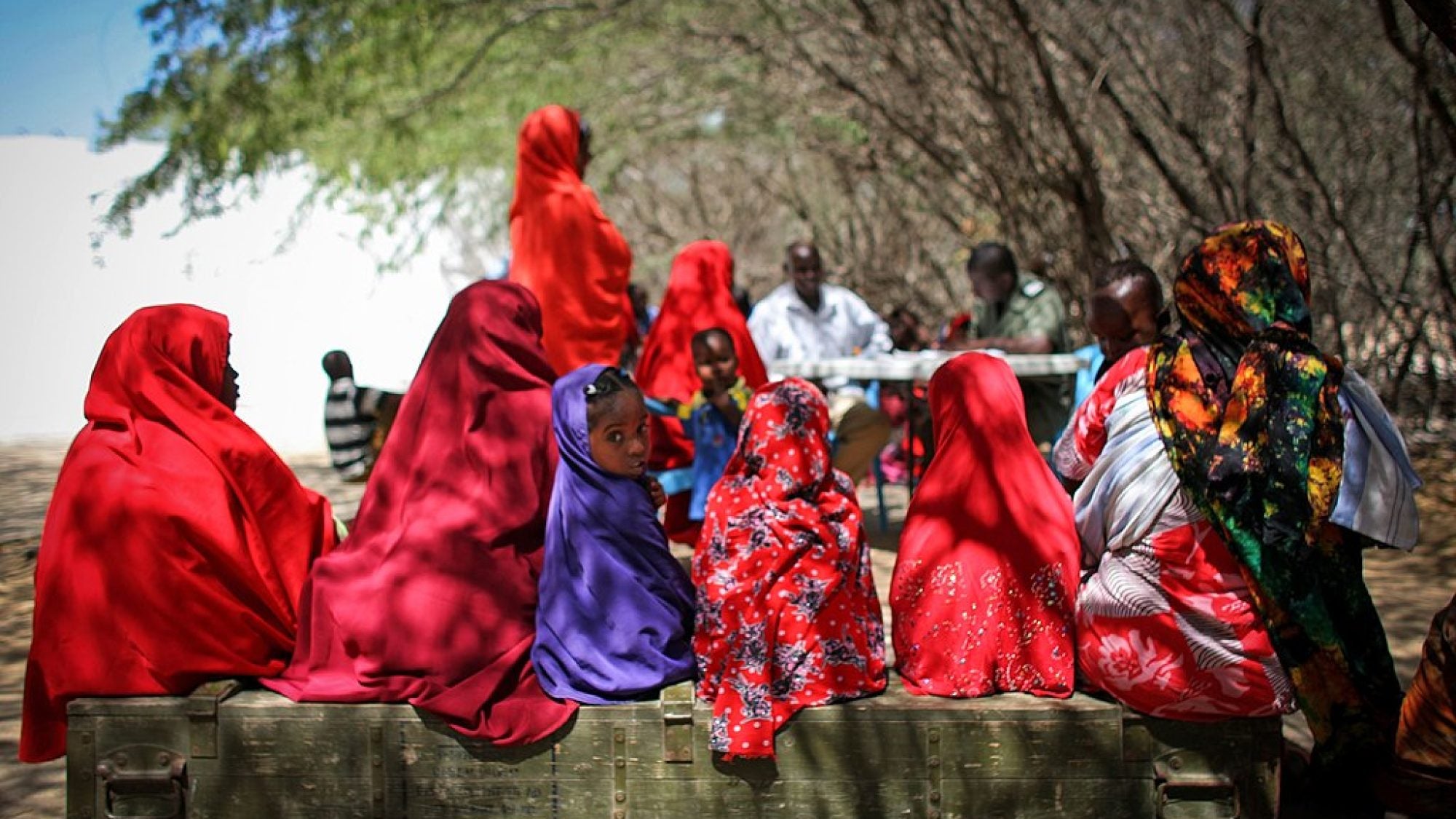
Title: Global Women’s Issues Interview with Ambassador Melanne Verveer
Click here to view as PDF || Shop the Entire Current Issue- The Integration of Regions || Return to The Integration of Regions index
“Violence against women and girls remains a global epidemic…”
“Today we know from volumes of data that no nation can grow the economy and create jobs without engaging women…”
GJIA: What were the challenges implicit in becoming the first U.S. Ambassador-at-Large for Global Women’s Issues? Did the nature of your role change over time?
Verveer: Secretary Clinton and I were not new to these issues, nor was the State Department. Secretary Albright actually established the first Office for Global Women’s Issues in 1996 and it was she who issued an important cable to the State Department staff, including those engaged in our operations around the world, to report on the situation of women and girls (from education to economic participation). In some ways, we had been flying blind due to the lack of reporting on these issues – an omission concerning half the population of the world – that really was important to the conduct of our foreign policy. Secretaries Powell and Rice continued the office.
Secretary Clinton clearly understood this approach must become a cornerstone of U.S. Diplomacy. My appointment by President Obama was consistent with her broader efforts on U.S. foreign policy, as was evidenced in the Quadrennial Diplomacy and Development Review and other initiatives. At the outset, some perhaps regarded the focus on women’s issues as marginal, but the relevance of these issues in enabling us to more effectively achieve our foreign policy goals became clear.
The agenda in this area was advanced in many ways, certainly through an integrative approach throughout the Department, but also through multilateral forums in which the US participated, through bilateral strategic dialogues, through development, and so on.
For me, establishing America’s leadership on these issues mattered, both symbolically and practically. As the Secretary often said, “[t]his is not just the right thing to do, but also the smart thing.”
GJIA: What remain your issues of most outstanding concern?
Verveer: Violence against women and girls remains a global epidemic. From the kinds of brutal violence in the Democratic Republic of Congo, for example, where rape is used as a tool of war to the everyday impunity against prosecution of domestic abuse. Governments have an obligation to enforce laws and bring all perpetrators of violence to justice.
The World Bank has written evocatively about, “the Missing” – some four million girls and women who are more likely to die, relative to males, either through infanticide and feticide, deaths in early childhood and deaths in their reproductive years. Feticide and infanticide solely because of son preference has begun to skew the demographics of countries like India and China. It is also not a problem confined to the poor. We are already seeing that when millions of young men outnumber women, additional violence occurs in the form of trafficking, child marriage and the kidnapping of girls. At the root of much of this is the lack of value placed on girls.
The situation of women in Afghanistan and preserving the gains they have made there in the last decade must be a priority for the United States. Moreover, if women are marginalized or silenced, any potential for a sustainable peace will be jeopardized. They are more than half the population of the country and have demonstrated leadership at all levels of society and in politics, the economy and civil society.
We have seen progress too. We are better attuned to addressing some of the deeply entrenched practices that take a toll on women and girls. In our development policies, we have invested in girls’ education because we know it is one of the most effective development investments for a girl’s future employment, the nutrition for her children, positive health impacts and more. Programs like conditional cash transfers put in the hands of mothers to invest in their children have had a transformational impact in countries like Brazil and Mexico. In addressing deeply entrenched cultural practices with harmful health impacts, working at the grassroots level has helped to shift norms from the practice of FGM, for example, to primary concern for the health of women and girls. There is greater progress being made to confront violence against women in post conflict societies like Guatemala where government has made ending impunity a priority. So there is much progress to note, but it is uneven.
GJIA: Which instruments of statecraft proved most useful in advancing your agenda as Ambassador?
Verveer: Women’s issues have been integrated into diplomacy and development and this integration also extends to the training of our diplomats, to budgeting to elevating responsibility for these issues, as well as infusing them across all the operations of the Department – human rights, economics, political military, etc – to achieve more effective outcomes. The President also issued an Executive Order and National Action Plan on Women, Peace and Security, something we are focusing on here at Georgetown at the new institute. The President also issued a Presidential Memo to make the position of Ambassador for Global Women’s Issues permanent, as well as an Executive Order on preventing violence against women globally. I also think significant advances have been made in promoting women’s economic participation. In the Asia Pacific region, perhaps the most economically dynamic, potential GDP remains constrained by the under-representation of women in the economic sphere. APEC, through US leadership, now has a strong focus on women and the economy and lifting the barriers that confine women’s entrepreneurship.
Today we know from volumes of data that no nation can grow the economy and create jobs without engaging women.
GJIA: Perhaps your most important theme has been the importance of education. Could you reflect on your own experiences at Georgetown University?
Verveer: Without education our horizons are limited. Education is critical to effecting change and protecting human dignity around the world.
When I consider the impact of my Georgetown education, I reflect on three themes. First, the formal content of my studies considerably broadened my outlook and intellectual development. Second, even many years ago when I was a student, Georgetown had strong international representation in its student body. Foreign students provided a perspective that stretched far beyond Washington, DC. Long before email and the Internet made the world more accessible, it was here on the doorstep of GU. Studying in the Nation’s Capital was also stimulating because some of the most prominent leaders and thinkers debated key issues on foreign policy on the campus. Finally, Georgetown and its Jesuit tradition imbued in me a strong set of values and service. We were called to serve something bigger than ourselves, to make a difference and create change in the world. These three attributes – scholastic accomplishment, the international environment and a call to service – all had a profound impact on me.
Ambassador Verveer was interviewed by Christopher Johnston on 21 March 2013.
Ambassador Melanne Verveer is the first U.S. Ambassador-at-Large for Global Women’s Issues. She is also the inaugural director of the Georgetown Institute of Women, Peace and Security. Image Credit: AMISOM Public Information, CC0, via Wikimedia Commons
This is an archived article. While every effort is made to conserve hyperlinks and information, GJIA’s archived content sources online content between 2011 – 2019 which may no longer be accessible or correct.
More News

Cruises have increasingly become a popular choice for families and solo travelers, with companies like Royal Caribbean International introducing “super-sized” ships with capacity for over seven thousand…

In March 2025, widespread protests erupted across Türkiye following the controversial arrest of former Istanbul Mayor Ekrem İmamoğlu, an action widely condemned as politically motivated and…

In this interview, GJIA sits down with Jojo Mehta, Co-Founder and Chief Executive of Stop Ecocide International, to discuss the global movement to codify ecocide as an international…